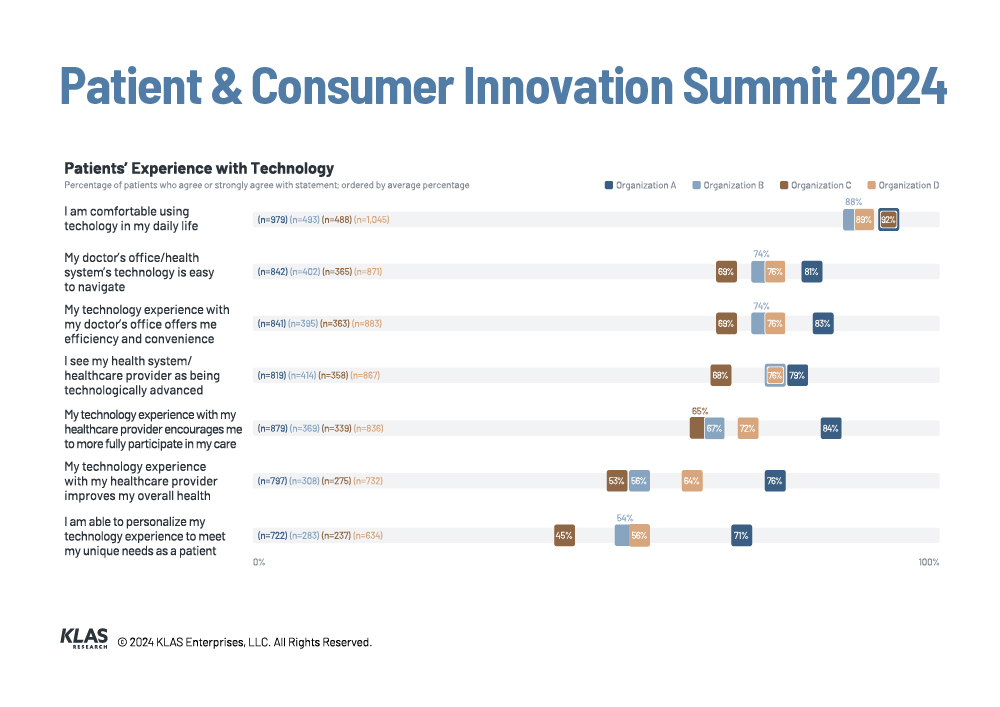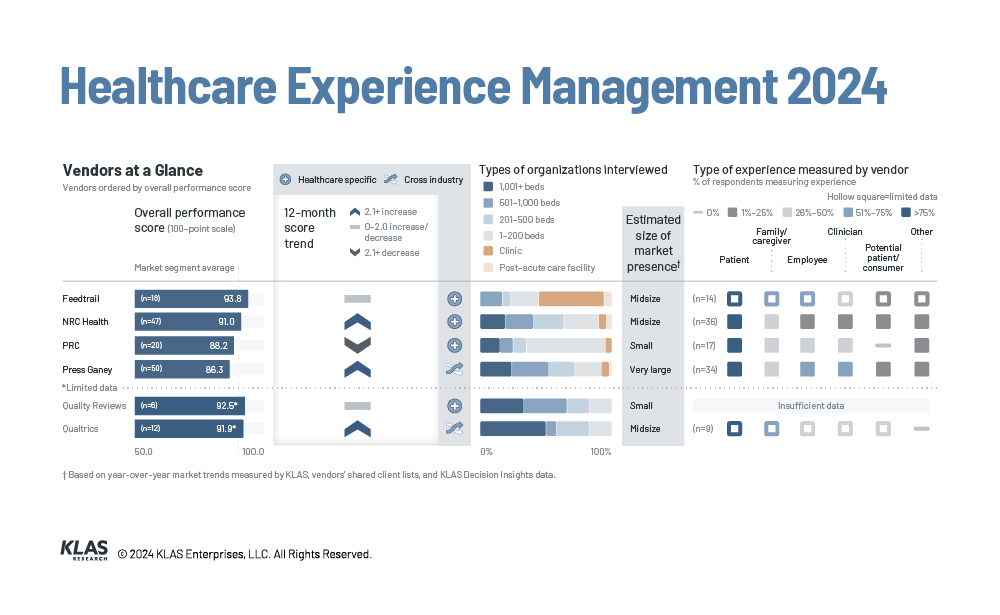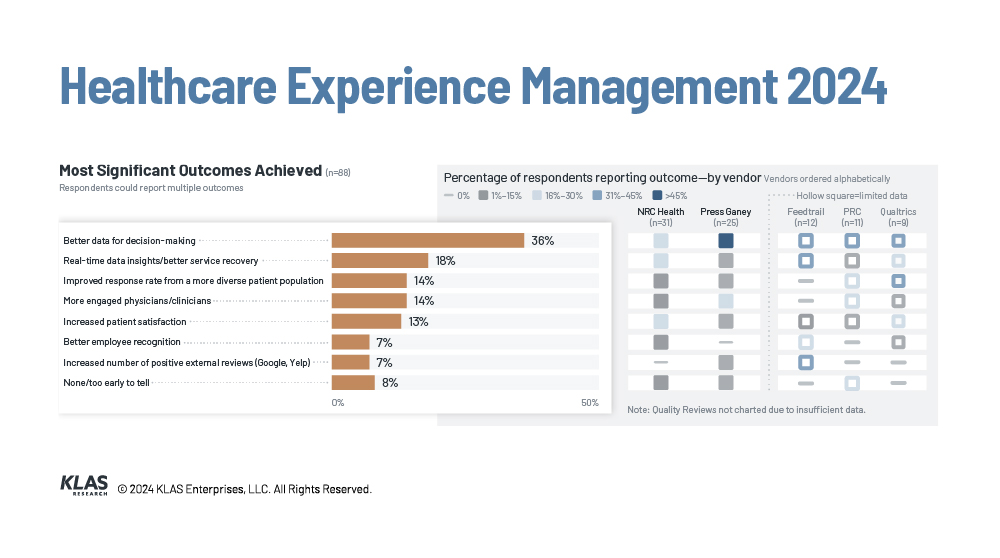Aligning healthcare organizations with the changing expectations of patients
Patients are becoming a bigger part of the care equation, but providers and their vendors are generally not aligned on priorities.

Patient experience can seem like a theoretical concept – until you, or someone you love, is the patient and you’re having a frightful experience in the midst of personal crisis.
In December 2012, my wife was diagnosed with Stage 1 breast cancer. We are grateful for the healthcare heroes and the good care she received, but we also had some difficult experiences. For example, when a nurse practitioner called us with the news, she said, “You have infiltrating ductal carcinoma. Do you have any questions?” That was quickly followed by information that a meeting with a surgeon had been scheduled in just eight days, and that they would see us after Christmas. That's all we were told – our minds went to the worst possible scenarios.
It was also difficult when we were asked to choose her treatment after surgery – several doctors in the same health system gave different recommendations. With all the unknowns, we had a hard time deciding what to do. In both instances, the hardest aspect was the lack of information, tracking, and insights was a challenge.
Also in my family, my grandmother dealt with multiple conditions as she aged. She would go from one doctor to the next, each one changing her medications. But she would only get worse, and new side effects would surface. This cycle continued until my dad started documenting and tracking everything, writing down all her doctors, their approaches and all her medications. It was his efforts that finally helped her stabilize and find relief.
These challenges are not unlike those faced by patients around the world every day. And solving these issues has made me very passionate about patient experience and experience management. And KLAS Research continues to report on patient experience technologies, as evidenced by its latest report, Healthcare Experience Management 2024. For the first time, we are talking directly with patients to gain their perspectives and we recently launched the new KLAS Patient Voice Collaborative to ensure that the voices of patients are heard and included in technology development and healthcare design.
Early findings
With the rise of consumerism, patients are quickly becoming a bigger part of the care equation. We knew providers and vendors would need to do more to meet patients where they are. When we began interviewing patients, we quickly found that providers and their vendors were generally not aligned on priorities. For example, patients wanted the ability to schedule appointments themselves, but it was not high on the list of priorities for providers.

Recently, one patient told us, “I wish that the doctor's office didn't use the technology to put a barrier between me and them. I call the office, and I am automatically routed to a call center. The reps in the call center can't do anything but send messages to the doctor's office. Nobody ever calls me back (except for one very dedicated person in the call center). The technology does not work unless everyone participates.”
The modern patient voice
In this new age of patient consumerism, healthcare organizations must better understand what patients want and need from the technologies these organizations are utilizing or thinking of using.
This raises questions such as the following:
Patient interviews over the last few years have revealed that their needs and expectations are different than what providers focus on. And we asked our provider members, how can we help healthcare organizations better align with patient expectations?
KLAS seeks to compare patient experiences between health systems through benchmarking. Best practices can reveal answers to vexing questions, such as what's working? Why did one health system have patients rate them high in this respect, when others are rated low? What's the difference? KLAS’s initial research, based on just four organizations, indicates considerable variation in patient experience with provider technology.

The KLAS Experience Management Report
KLAS published its Healthcare Experience Management Report 2024 in June – it builds on a considerable body of previous research on patient experience, patient engagement, patient financial experience, front office automation and related topics. It details how the patient experience improvement market has evolved over the years.
Provider organizations initially used standardized, retrospective benchmarking data to improve patient experience before shifting to customizable tools that collect feedback in real time and aid with service recovery (see the Patient Experience Improvement 2021 report).
Now, with the rise of healthcare consumerism, organizations are broadening their reach to measure and improve the experience of other stakeholders in the healthcare ecosystem, moving beyond patients to consider the experiences of family members and caregivers, employees, clinicians and even potential consumers. This focuses more holistically on healthcare experience management, examining customer feedback to determine how well vendors are developing offerings to improve the experience of all healthcare stakeholders.
A new breed of technologies can enable healthcare providers to become adept and responsive to patient experience and meet growing expectations for better service and care delivery.

Customers of high-performing Feedtrail and market share leader Press Ganey report both broad and deep adoption for measuring stakeholder experiences. NRC Health has the most-improved overall performance score, and PRC stands out for increasing clinicians’ awareness of patients; both vendors have opportunity to broaden measurements beyond patient experience. Qualtrics customers appreciate cross-industry expertise and advanced capabilities. Quality Reviews was highlighted for value and user experience.

Organizations are reporting actionable results, including faster response to patient concerns. A Feedtrail user said, “The largest outcome for us is that we can address any negative feedback or concerns a patient has within one business day. When we contact a patient within 24 hours, they are often very surprised and aren’t expecting that call.”
Another user said, “Thanks to PRC, we are getting more patient comments. We can look at areas where we want to increase things and see whether we are meeting our benchmarks. Our clinic can focus on patients’ experiences with providers and address specific needs that need to be addressed through the responses.”
And a Qualtrics customer notes that, “We are able to capture patient feedback within hours of a patient’s visit instead of days or weeks. We now follow up and close all the negative comments within a week or so through the system. We have built a closed-loop system, so we not only capture the comments but also categorize them into positive and negative. All the negative comments are being followed up on in a timely manner. We also ask patients to recognize our staff members. We identify a lot of physicians’ staff members, and we summarize the data every quarter and share it with the different operation and unit leaders for recognition purposes.”
These technologies give provider organizations new capabilities to enable the tracking of patient experience, helping them to act on findings in a timely fashion, offering an advantage in an age of increasing patient consumerism. The result can be a true win-win for healthcare organizations, their clinicians and their patients.
Adam Cherrington is vice president for digital health and patient voice at KLAS Research.